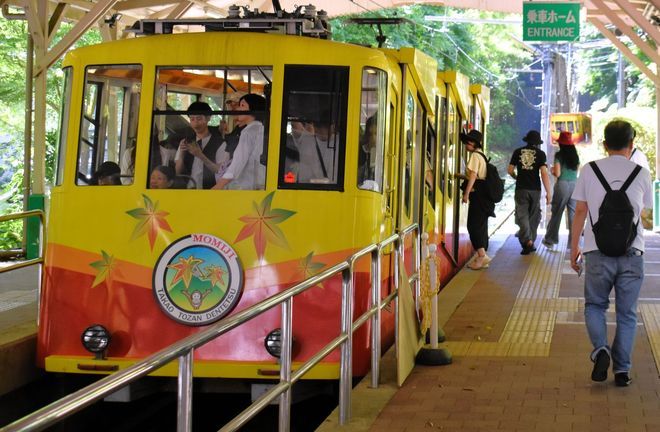A popular daytrip from central Tokyo, Mount Takaosan at 599 meters high is seemingly a safe and casual hike compared to imposing Mount Fuji, Japan’s tallest peak at 3,776 meters.
But while Mount Takaosan bustles with many sightseers, it is also one of the nation’s most common sites for mountaineering accidents, even more than on Mount Fuji.
According to statistics released by the National Police Agency on June 19, 131 people became stranded in the Mount Takaosan range in 2024.
In comparison, the figure for Mount Fuji is 83, while the number for the Hotaka mountain range, which is part of the Northern Japan Alps with peaks of more than 3,000 meters, is 66.
OLDER HIKERS MORE VULNERABLE TO INJURY
Located at the western end of the Kanto plain about an hour by train from central Tokyo, Mount Takaosan attracts up to 4 million visitors a year from home and abroad.
Climbers can take the cable car or chair lifts to get halfway up the mountain where sits the Yakuoin temple dating to the Nara Period (710-784).
Hikers can fully appreciate Mount Takaosan’s rich natural beauty in all seasons and see Mount Fuji from the mountaintop.
But as to why so many accidents occur at the easily accessible low mountain, Toshiro Saeki, head of a mountain rescue team at the Metropolitan Police Department’s Takao Police Station, said, “Many accidents involved falls, sickness and fatigue. By age, middle-aged and older people account for a large portion.”
While there are Trails 1 through 6 at Mount Takaosan, many accidents occur on Trail 1, which is paved to the top and taken by many climbers.
“When they get exhausted while going up and down the trail, they can lose their balance over a slight depression in the ground,” Saeki said. “Depending on the situation, they may fall and break bones or sustain other serious injuries.”
Surprisingly, many hikers become stranded due to exhaustion on the trails below the cable car station located halfway up the mountain.
JAPAN’S STEEPEST INCLINE
The funicular operated at Mount Takaosan is Japan’s steepest cable car with a maximum inclination of 31 degrees and 18 minutes.
Trail 1, which runs parallel to the track, is also a winding steep slope.
It can be difficult for climbers to go up and down the trail depending on their physical condition.
There have been cases in which climbers couldn’t get up after sitting on a bench for a break.
Many hikers also become disoriented after sunset while going into another mountain range or traversing an adjacent mountain.
In some cases, climbers headed toward a roadway seen in the distance and became stranded under a bridge pier after realizing it was an expressway off-limits to people.
There is also a cliff of several tens of meters high along the traverse route, posing a risk of slipping and falling to one’s death.
“To prevent mountaineering accidents, it is important not to take the low mountain lightly and to plan ahead and prepare equipment,” Saeki said.
For example, it takes six to seven hours at a normal pace to go through the so-called Minami-Takao Seven Summits route traversing mountains on the south side of Mount Takaosan.
Hikers can finish their trek with time to spare when they check the route and plan their schedule in advance.
Meanwhile, the rescue team leader recommends bringing a headlamp, rainwear, a mountaineering map, a compass, a cellphone and spare batteries, in addition to sufficient drinking water and rations to easily meet nutritional needs.
“You can forget about everything when you walk up a mountain. The good part is that you can switch from work to leisure time,” said Saeki, who is an avid climber himself. “When you climb a mountain, I hope you prepare well and return home with good memories.”


AloJapan.com